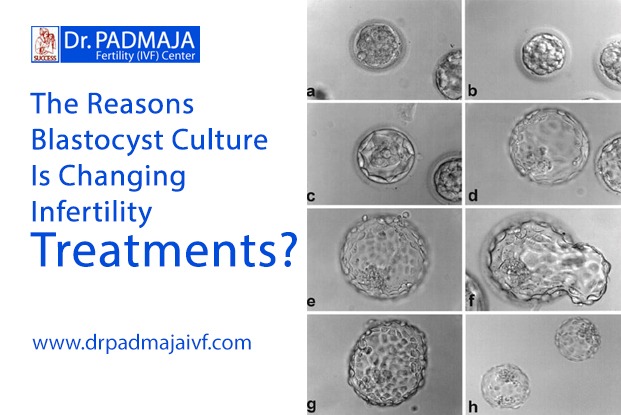Infertility treatment has made remarkable progress over the past few decades, offering renewed hope for couples and individuals longing for parenthood. Among the recent advancements, blastocyst culture has become a game-changer in the field of IVF (In Vitro Fertilization). This technique has significantly increased the success rates of IVF, providing better outcomes for many who are struggling with infertility. For those considering IVF, understanding blastocyst culture and its benefits is crucial when choosing a fertility center.
Leading centers like Dr. Padmaja IVF Center, known as one of the best IVF centers in Hyderabad, are at the forefront of using blastocyst culture to achieve higher pregnancy rates and provide better experiences for their patients.
What Is Blastocyst Culture?
Blastocyst culture involves allowing embryos to develop in the lab for five days after fertilization, rather than the traditional two or three days. By the fifth day, embryos reach the blastocyst stage, which is a more advanced phase where they consist of a higher number of cells and a more complex structure. This stage is closer to what naturally happens in the body, improving the embryo’s chances of successful implantation in the uterus.
At Dr. Padmaja Fertility Center in Hyderabad, the experts apply this technique to give patients a better chance at achieving their dream of parenthood.
Why Blastocyst Culture Is Transforming Infertility Treatments
There are several key reasons why blastocyst culture has become a breakthrough in fertility treatments:
Higher Implantation Rates
Compared to embryos in earlier stages, blastocysts have a better likelihood of implanting successfully in the uterus. By allowing embryos to mature for five days, doctors can choose the strongest ones, which leads to increased success rates. The result is a higher chance of pregnancy with fewer cycles of IVF, offering a more efficient path to parenthood. Many couples at Dr. Padmaja IVF Center have experienced this benefit, achieving pregnancies more successfully through the center’s specialized approach.
Better Embryo Selection
Generally speaking, embryos that reach the blastocyst stage are more viable and have more time to develop. Fertility specialists can observe the embryos’ growth patterns, making it easier to select the ones with the highest chance of success. This careful selection process can lead to improved outcomes and has become a standard at Dr. Padmaja Fertility Center, which is known for delivering high-quality care to its patients.
Lower Risk of Multiple Pregnancies
Since blastocyst culture allows for the selection of stronger embryos, fewer embryos need to be transferred to achieve a successful pregnancy. This minimizes the risk of multiple pregnancies, which can be risky for both the mother and babies. By opting for single or dual embryo transfers, Dr. Padmaja IVF Center helps reduce complications while still achieving high pregnancy rates.
Compatibility with Genetic Testing
Blastocyst culture is highly compatible with preimplantation genetic testing (PGT). By growing embryos to the blastocyst stage, fertility specialists can perform genetic testing with greater accuracy. This is particularly useful for those at risk of genetic disorders or recurrent miscarriages. Many couples turn to Dr. Padmaja Fertility Center in Hyderabad for this combined approach, as it offers the peace of mind that the selected embryo is genetically healthy.
Better Timing with Natural Processes
In natural conception, embryos reach the uterus around the fifth day, so transferring embryos at the blastocyst stage aligns with this timing. This synchronization can increase the chances of implantation, as the embryo is transferred at a stage that matches the body’s natural readiness.
Choosing the Right Fertility Center
The success of blastocyst culture is greatly influenced by the choice of fertility facility. Among Hyderabad’s top IVF facilities, Dr. Padmaja IVF Center provides personalized care with the latest techniques, like blastocyst culture, to give patients the highest possible chance of success.
Using cutting-edge technology, a highly qualified staff, and a patient-centered approach, Dr. Padmaja Fertility Center has helped countless couples overcome infertility and achieve their dream of parenthood. For anyone seeking effective, compassionate, and state-of-the-art fertility treatments, blastocyst culture at Dr. Padmaja IVF Center is a powerful option that can make all the difference.
About The Author :

If Dr. Padmaja Divakar is a public figure or a professional in a specific field, I recommend checking her official website, professional profiles, or reliable online sources for the most up-to-date and accurate information about her background, qualifications, and achievements.
Frequently Asked Questions (faqs)
1.What is blastocyst culture?
Blastocyst culture is a process where embryos are grown in the lab for five to six days after fertilization, instead of the traditional three days. At this stage, embryos reach the “blastocyst” phase, where they consist of around 100–200 cells and are more developed, improving selection for viable embryos.
2.How does blastocyst culture improve success rates in IVF?
Blastocysts have a higher implantation potential compared to earlier-stage embryos. By waiting until day five or six, embryologists can identify embryos that have a stronger development and higher likelihood of implantation in the uterus, leading to higher success rates for pregnancies.
3.Why is blastocyst culture better than the traditional three-day embryo transfer?
The traditional three-day transfer gives less time for embryos to develop, making it harder to determine which are the strongest. With blastocyst culture, embryos undergo additional cell divisions, allowing embryologists to assess their growth and quality more effectively, leading to more informed embryo selection.
4.Does blastocyst culture help reduce the number of embryos transferred?
Yes, because blastocyst culture improves the ability to select viable embryos, fewer embryos are needed for transfer. This can reduce the likelihood of multiple births, which can pose health risks for both the mother and the babies.
5.Are there specific patients who benefit most from blastocyst culture?
Blastocyst culture is especially beneficial for patients who produce a higher number of embryos during IVF, as it provides more embryos for selection. It may also be advantageous for those who have had unsuccessful three-day transfers in the past.

